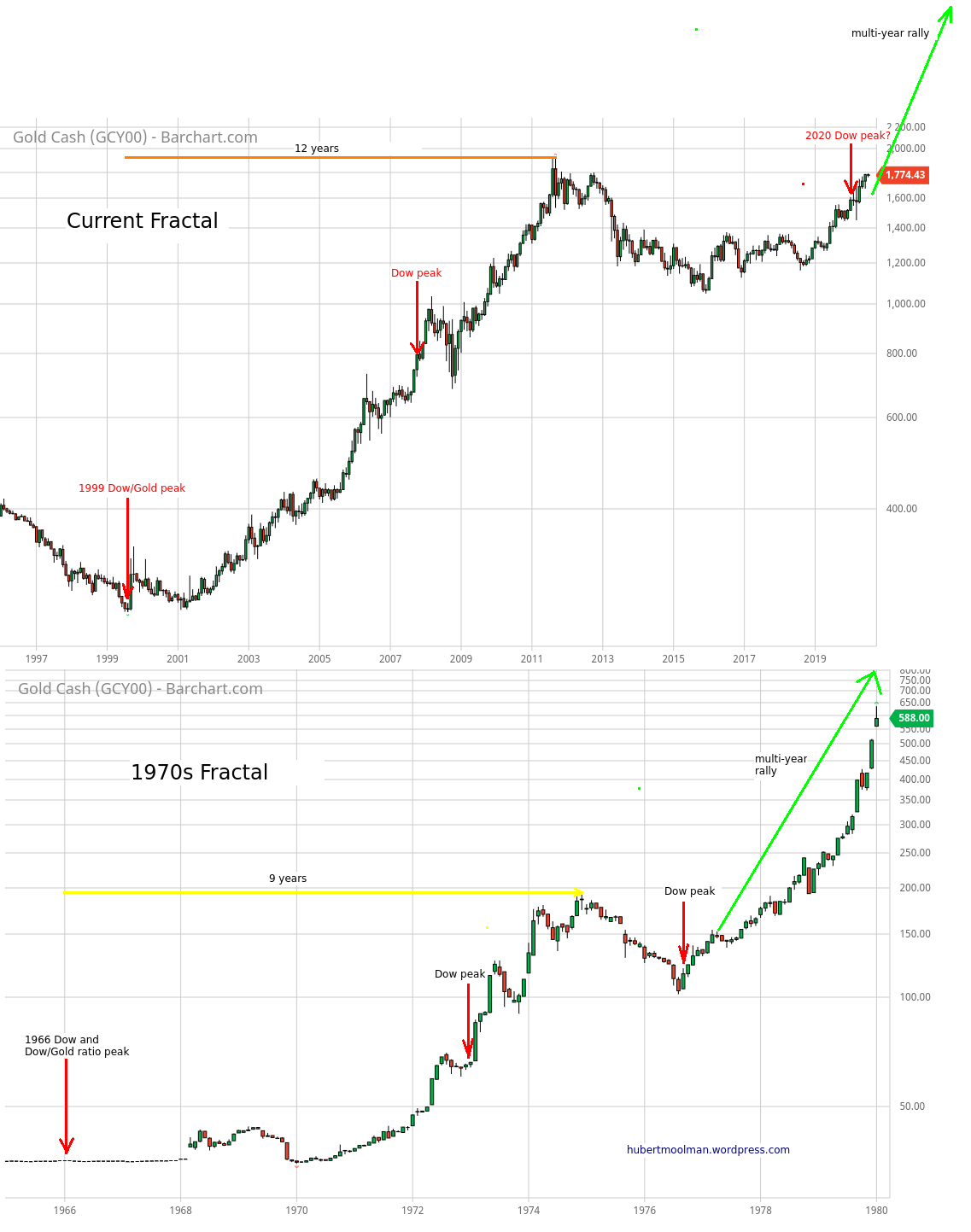During the 70s bull market, gold went from $35 to $195 in the first phase. That was a 458% increase. The first phase of the current bull market took gold from $252 to $1920, which made for a 661% increase.

At first glance, it would appear that the current bull market outperformed the 70s one. However, it only took about five years (1970 to 1975) to get the 458% increase, compared to the roughly ten years and five months it took to get the 661% increase. If the performance of the current bull market actually matched that of the 70s, then prices should have probably risen more than 1000%. The decline from the peak of the first phase of the 70s, took gold from $195.5 to $102.2, a 47.7% drop.
The decline from the peak of the first phase of the current bull market, took gold from $1920 to $1041, a 45.8% drop.
The declines are almost similar in extent (47.7% vs 45.8%), however; the decline in the 70s only took about one year and nine months, whereas the decline since 2011, took about four years and three months.
The 70s decline lasted about 35%(1yr 9months/5yrs) of the period of the rise, whereas the decline since 2011 lasted about 40.8% (4yrs 3months/10yrs 5 months) of the period of the rise. This shows that the declines were almost similar relative to the period of the rise in prices.
The conclusion to draw from this: things take longer in the current period, but they go higher.
The rise from the bottom in 1976 to the top in 1980 took about 41 months, and gold went from $100 to $873 (773% increase). If gold can match this increase, it would reach $9087. Based on the performance of the first leg of the current bull market, it should easily reach this.
It is already 55 months (a Fibonacci number by the way) since gold hit the bottom at $1041. So, again things take much longer.
Below, is a comparison of the current gold fractal and that of the 70s:

Gold looks poised to take the all-time high soon.
Original source: Hubertmoolman.wordpress.com
Reproduction, in whole or in part, is authorized as long as it includes all the text hyperlinks and a link back to the original source.
The information contained in this article is for information purposes only and does not constitute investment advice or a recommendation to buy or sell.

















